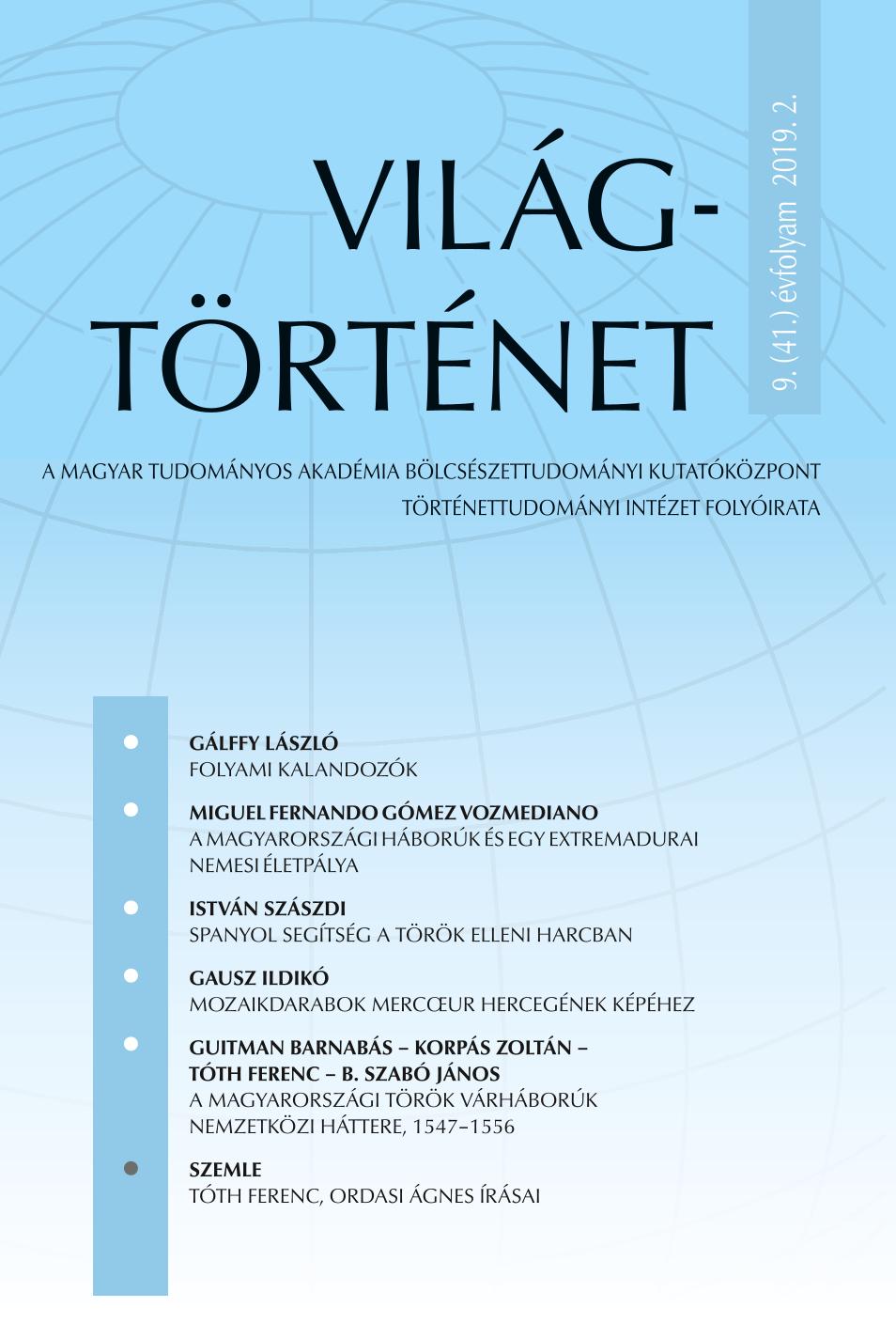A magyarországi török várháborúk nemzetközi háttere, 1547–1556
The International Background of the Ottoman War in Hungary, 1547–1556
Author(s): Barnabás Guitman, Zoltán Korpás, Ferenc Tóth, János B. SzabóSubject(s): 16th Century
Published by: Magyar Tudományos Akadémia Bölcsészettudományi Kutatóközpont Történettudományi Intézet
Summary/Abstract: This study was born from the common thinking of several professionals. As experts specialized in certain areas, authors have long been concerned with the challenge, that the studies about the so-called “Castle Sieges Period” (1550–1552) — as part of the national pantheon — are focusing just on the Hungarian heroic legends. Our historiography already explored in a detailed way the Hungarian military events in the years under discussion, but remained debtor with a cardinal question: what is the international context of the happenings in Hungary in the middle of the 16th century? Is it possible to study that independently from the History of Europe? The failure of the Hungarian unification of 1550–56 can be treated as a local matter? Our writing attempts to shed light on the fact that in the middle of the 16th century not only the Habsburg–Valois dynastic conflict was in strong correlation with the Ottoman military expansion in Hungary, but also a number of significant or less significant European powers were involved in the fightings as part of dynastic alliances systems. Thus, for various reasons, but in a coherent manner, there were many fronts from Germany through the Mediterranean and Italy to the Persian Gulf, which had direct or indirect influences on each other. The Hungarian Kingdom was just one of these, and everything that happened in the Carpathian Basin can only be understood from this broader European and Mediterranean perspective.
Journal: Világtörténet
- Issue Year: 2019
- Issue No: 2
- Page Range: 253-293
- Page Count: 41
- Language: Hungarian

